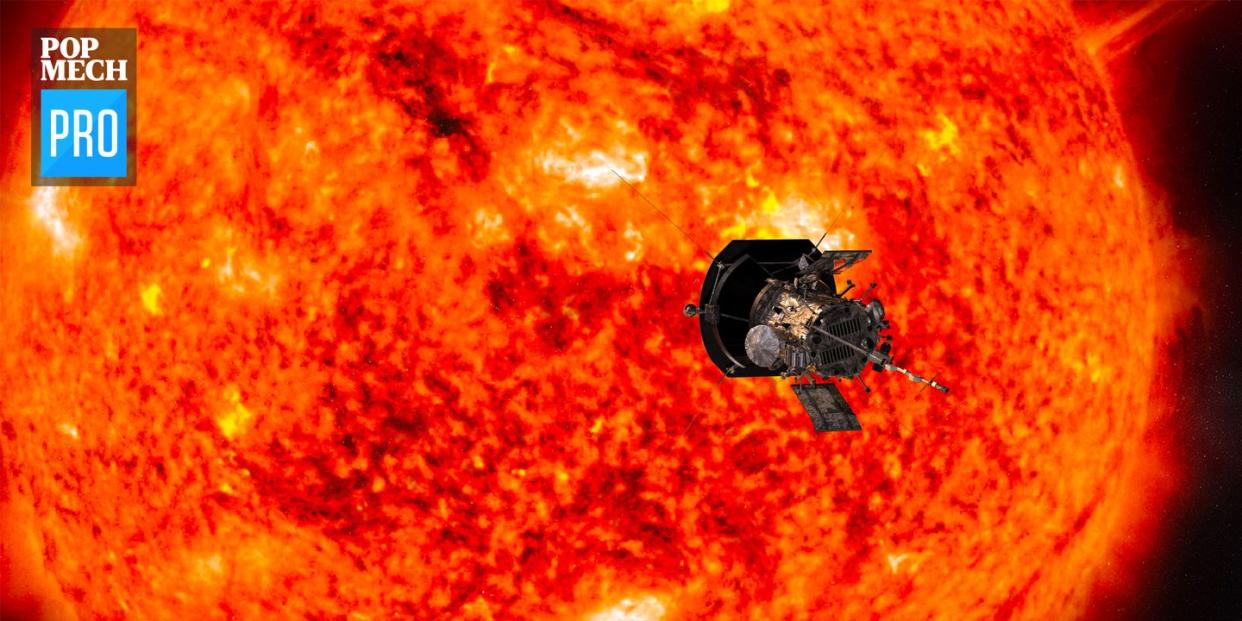The Fastest Spacecraft Ever Zips Past the Sun for a Third Time

This week, the Parker Solar Probe zoomed by the sun for a third time since its 2018 launch.
At its closest approach, the Parker Solar Probe will travel as fast as 430,000 miles per hour.
The next solar fly-by is set for January 29, 2020.
NASA’s Parker Solar Probe safely zipped by the sun this week, collecting information about the star’s corona, solar wind, and magnetic field. This is the third time since the probe's 2018 launch that it has has swooped close to the sun.
At its closest, a point called perihelion, Parker was just 15 million miles away from the sun’s surface, according to a NASA press release. The probe was traveling approximately 213,200 miles per hour. During this flyby, mission scientists and engineers turned on Parker’s instruments far sooner than in previous flights. Now, it’s time to crunch the data.
The Parker Solar Probe still has a long way to go—21 more flybys, to be exact—before it completes its mission. Scientists say the mission could reveal the sun’s long-held secrets. For instance, the mission may reveal why the sun’s pulsating corona, a twisting mass of plasma, is so much hotter than its surface. Researchers are also hoping Parker will provide insight into the mechanisms that propel solar winds and why the sun’s magnetic field is so chaotic.
The spacecraft is specially designed to withstand the sun’s intense heat and radiation. Its heat shield, for example is built to endure more than 3 million watts of energy upon its closest approach to the sun. The probe also requires an incredibly efficient cooling system due to the extreme temperatures. After engineers tested numerous types of coolants, they came up with a surprisingly effective coolant: water.
At its closest approach, Parker Solar Probe will reach speeds of 430,000 mph, making it the fastest vehicle ever created. At these speeds, according to NASA, you could travel from Washington, D.C. to Philadelphia in one second.
The next go-around is scheduled for January 29, 2020.
You Might Also Like

